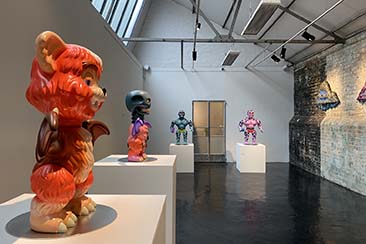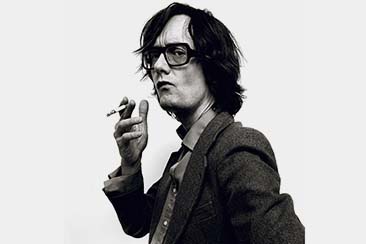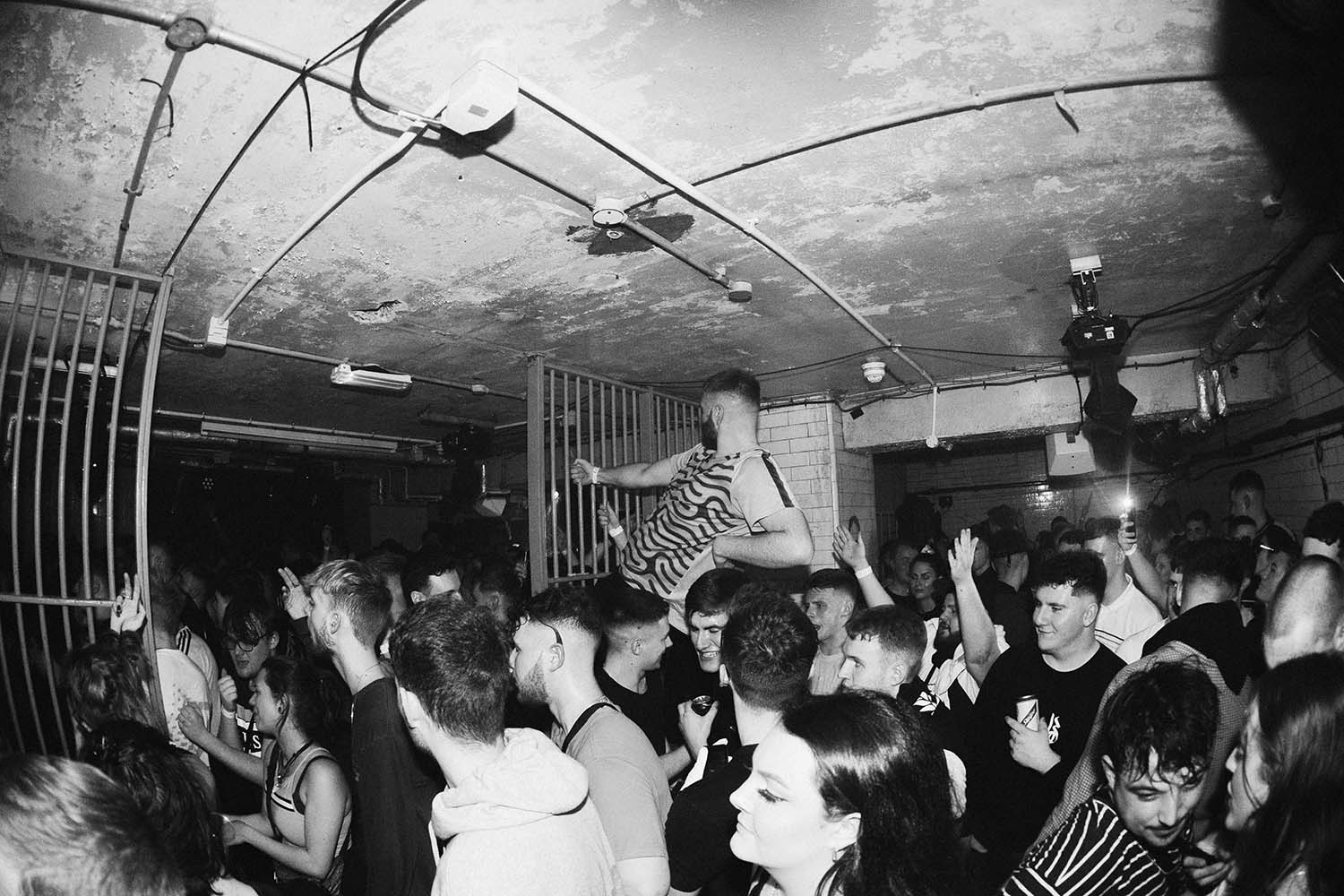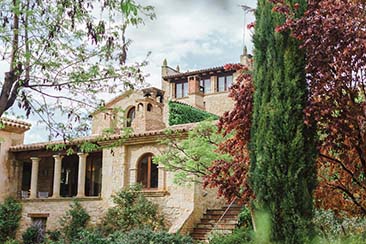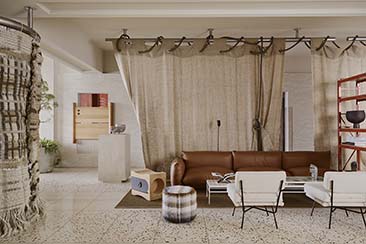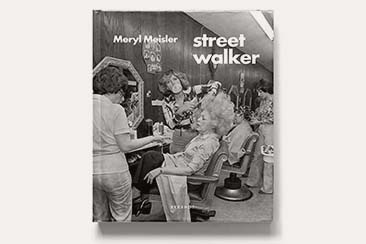The days of the old school picture editor working out crops with a ruler are long gone. These days the images we see in the Press is the result of Photoshop manipulation, through which every change is instantly possible and instantly reversible, and totally impermanent. In the days of Nixon and Brezhnev though, crops were marked on a print, leaving a record of the editor’s thinking. The decisions to remove bystanders or background, or change the focal point from that intended by the photographer, are there for all to see, and played a huge role in the way politics was presented to the public. An extra dimension of theatricality was introduced, examined here by David Birkin in his series for the Lieux de Mémoire (Places of Memory) exhibition at Sumarria Lunn Gallery, London.
As well as presenting appropriated images from the Cold War era, Birkin has contributed his own work. This includes including Pietà, an image of an Afghan mother mourning over a dead child killed by a bomb in 1992, which picture appears to have been redacted in some act of exuberant censorship. The added colour is lapis lazuli, mined exclusively in Afghanistan and once so rare and valuable that it was the only pigment used to depict the Virgin Mary. The intervention also referenced Yves Klein’s famously patented blue, which represented freedom and the heavens. Birkin’s work is being shown alongside that of three other artists – Nadia Kaabi-Linke, Manuela Ribadeneira and Nasan Tur – and the show finishes on 24 January.
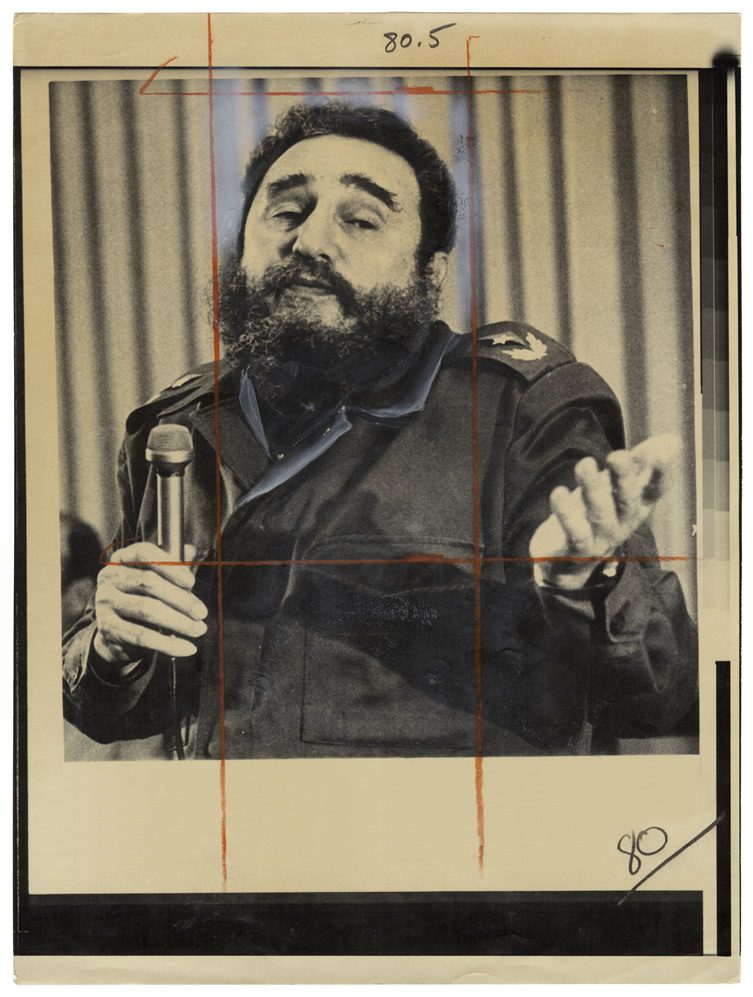
Castro
from the series Iconographies, 2013
by David Birkin
C-type print
103 x 73cm
Courtesy of the artist/
Sumarria Lunn Gallery
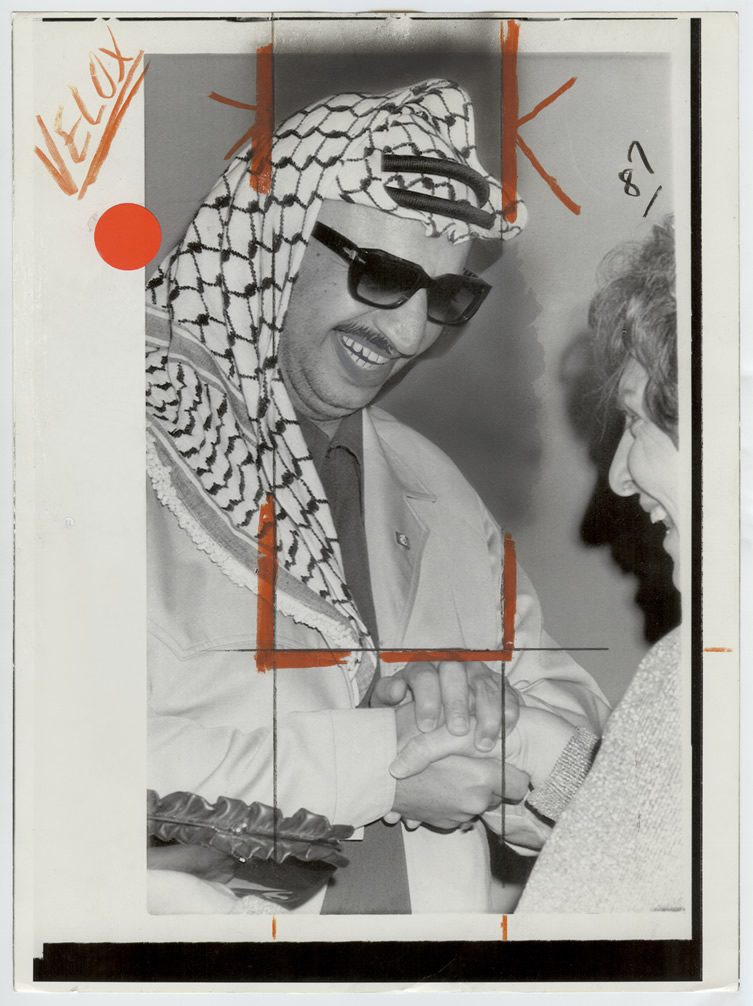
Arafat
from the series Iconographies, 2013
by David Birkin
C-type print
103 x 73cm
Courtesy of the artist/
Sumarria Lunn Gallery
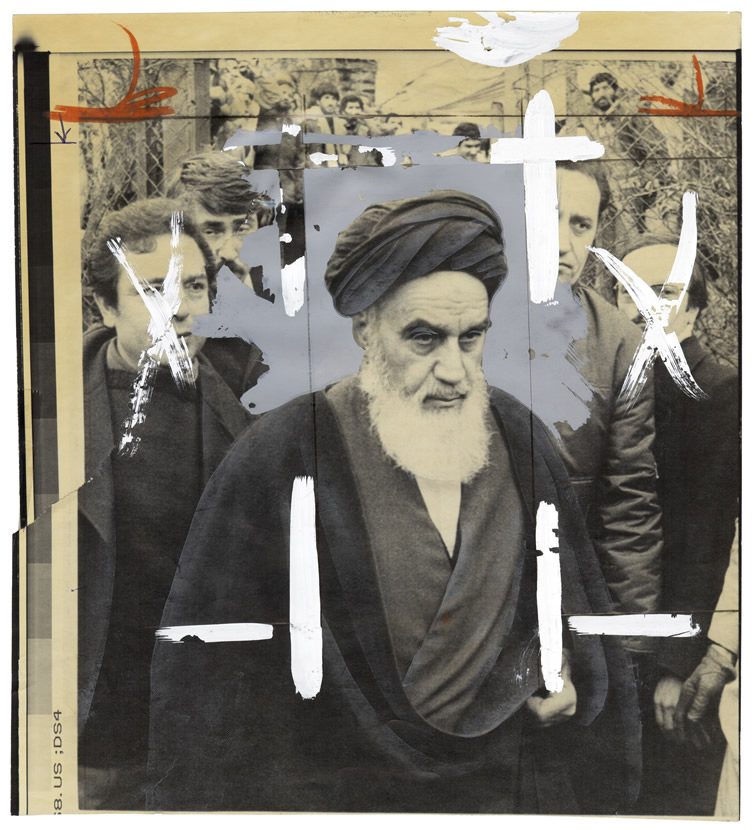
Ayatollah
from the series Iconographies, 2013
by David Birkin
C-type print
103 x 73cm
Courtesy of the artist/
Sumarria Lunn Gallery
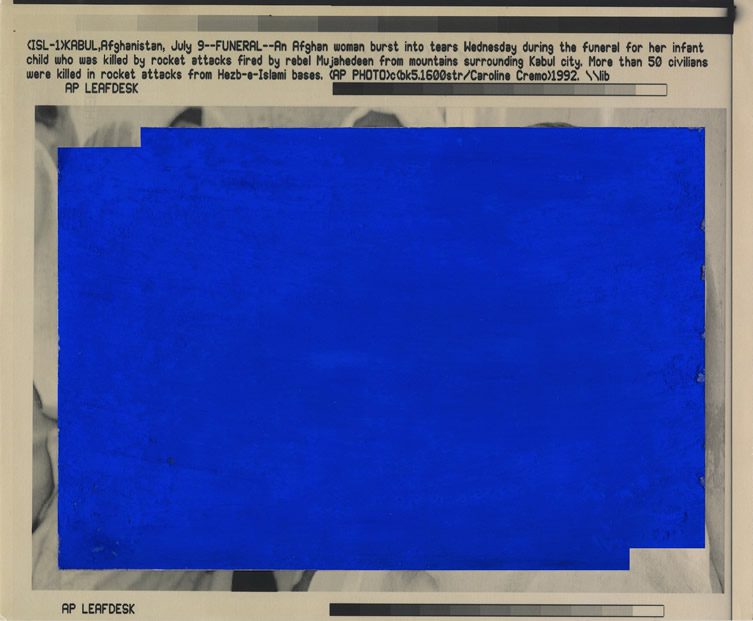
Pietà
by David Birkin
Photo and lapis lazuli
17.8 x 20.3cm
Courtesy of the artist/
Sumarria Lunn Gallery
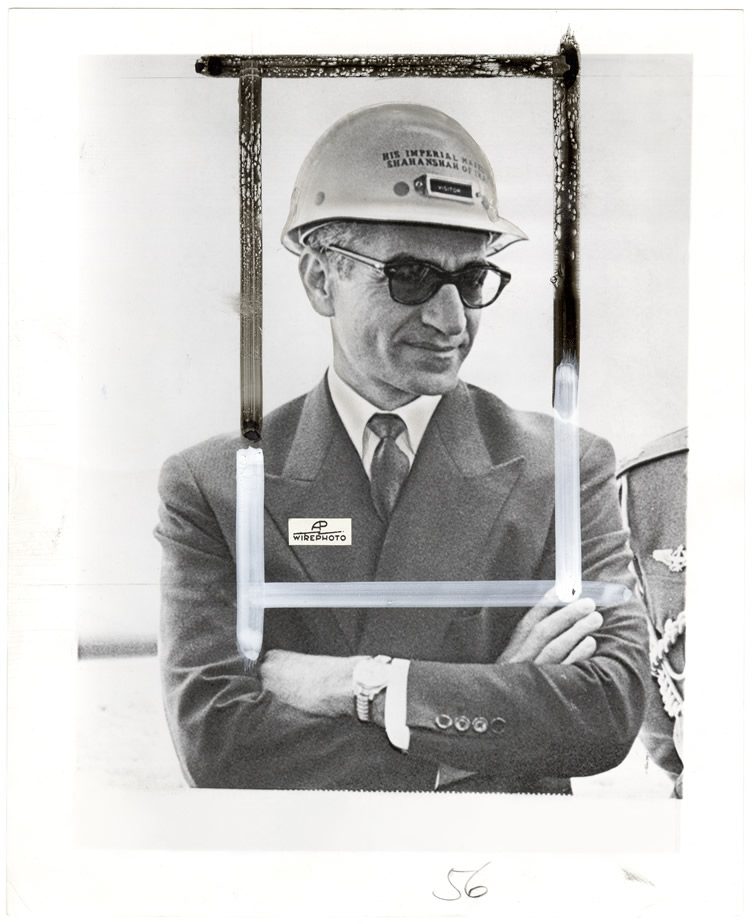
Shah
from the series Iconographies, 2013
by David Birkin
C-type print
103 x 73cm
Courtesy of the artist/
Sumarria Lunn Gallery
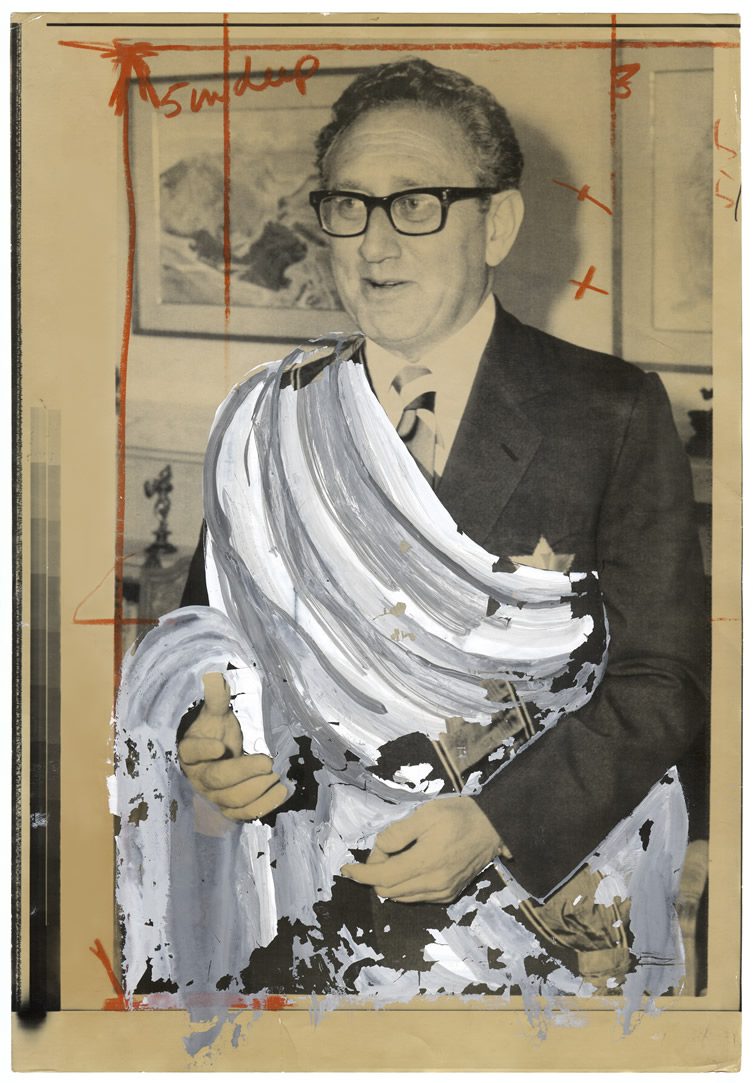
Kissinger
from the series Iconographies, 2013
by David Birkin
C-type print
103 x 73cm
Courtesy of the artist/
Sumarria Lunn Gallery


